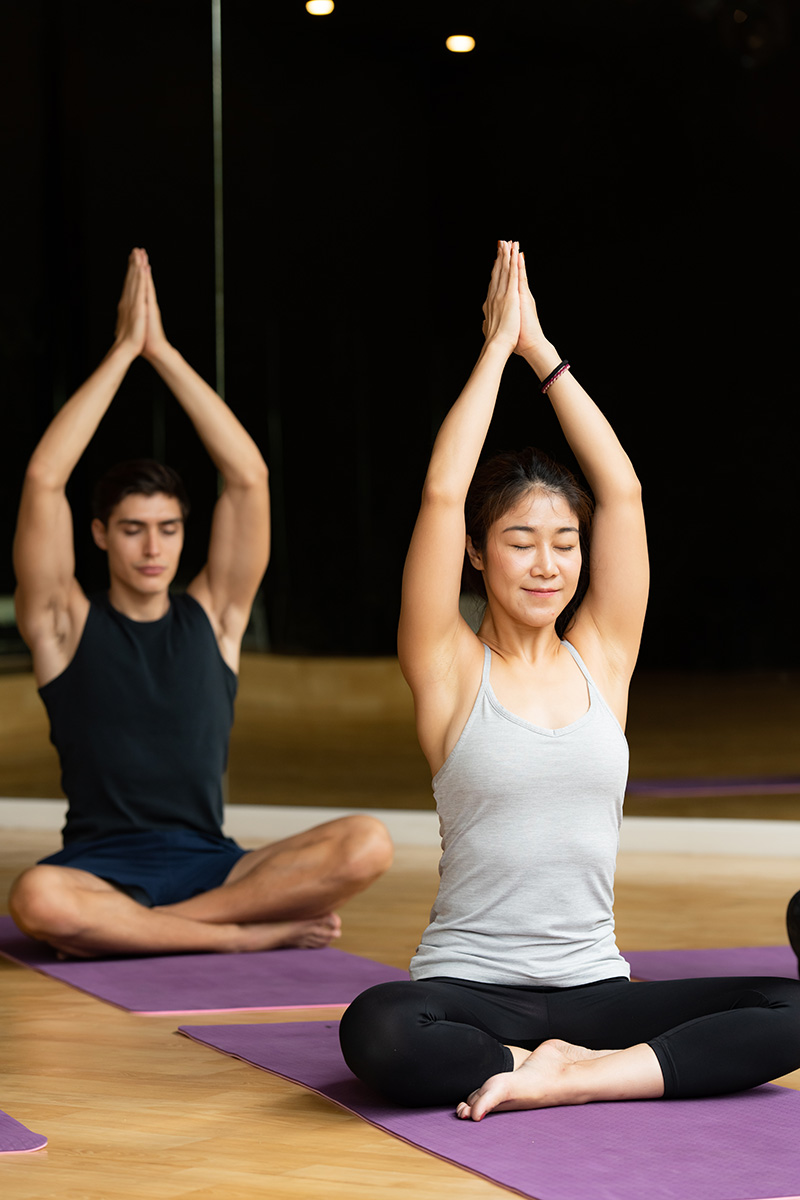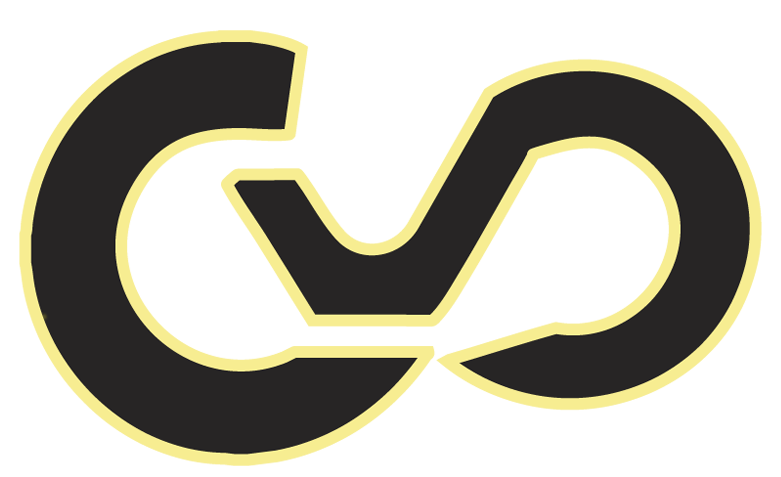Flow State: What It Means and How to Get There
Tips, Talk, and Training from Inside CYO.
When movement becomes magic, and effort feels effortless.
You’ve felt it before — that sweet spot where everything clicks. You’re fully present. Time feels different. Distractions disappear. Whether you’re deep in a yoga sequence, riding hard to a beat drop, or lost in a Pilates movement, you’ve touched the edges of what’s called flow state.
At CYO Studio, we design our classes to help you find that zone — again and again. Here’s what flow state really is, why it matters, and how to unlock it in your movement practice.
🧠 What Is Flow State?
Psychologist Mihály Csíkszentmihályi (yes, we had to Google the pronunciation too) defined flow as the mental state where a person is fully immersed in an activity with energized focus, full involvement, and enjoyment. It’s when you’re so dialed in that time either slows down or flies by — and you’re simply in it.
In other words: flow is the zone where mind, body, and action become one — and it feels amazing.
Think about the last time you were completely absorbed in something. Maybe you were cooking a complex dish and suddenly realized two hours had passed in what felt like minutes. Or you were having an incredible conversation where words flowed effortlessly and you felt completely understood. That’s flow — and it’s not just reserved for elite athletes or creative geniuses. It’s accessible to all of us, especially through movement.
✨ Why Flow State Matters
Flow state isn’t just a nice-to-have experience — it’s transformative for both your mental and physical wellbeing. When you’re in flow, your brain releases a powerful cocktail of neurochemicals including dopamine, norepinephrine, endorphins, and anandamide. This natural high doesn’t just feel good in the moment; it creates lasting benefits.
People who regularly experience flow report higher levels of life satisfaction, increased creativity, and improved performance in all areas of their lives. In movement specifically, flow state helps you push past perceived limitations, move with greater efficiency, and develop a deeper connection to your body’s wisdom.
From a physical standpoint, flow state allows you to access your body’s full potential. When your mind stops interfering with overthinking and self-doubt, your body can move with its natural intelligence. This is why breakthroughs often happen when we least expect them — when we’re not trying so hard, but simply being present with the movement.
🎯 The Characteristics of Flow in Movement
Flow state in movement has some distinct markers that you can learn to recognize and cultivate. When you’re truly in flow during a workout or class, you’ll notice several key characteristics emerging.
Your attention becomes laser-focused on the present moment. Instead of thinking about your to-do list, what happened earlier, or what’s coming next, you’re completely absorbed in the sensations of movement. Your breath, the rhythm of your steps, the stretch in your muscles — these become your entire world.
The dialogue in your head quiets down significantly. That critical inner voice that usually comments on your form, compares you to others, or tells you that you can’t do something either disappears entirely or becomes a whisper in the background. You’re moving from a place of intuition rather than analysis.
Challenge and skill feel perfectly balanced. The movement isn’t so easy that you’re bored, but it’s not so difficult that you’re overwhelmed with anxiety. You’re riding that sweet edge where you feel capable and engaged, where growth happens naturally without force.
Time perception shifts dramatically. Sometimes a 60-minute class feels like it flew by in 15 minutes. Other times, you feel like you have all the time in the world to sink deeper into a pose or perfect a movement pattern. This altered sense of time is one of the most reliable indicators that you’ve dropped into flow.
🔓 How to Access Flow State in Your Practice
Creating the conditions for flow isn’t about forcing it to happen — it’s about setting up the right environment and mindset so it can emerge naturally. Like a garden, flow needs the right conditions to bloom.
Start with clear intentions. Before you begin moving, take a moment to set a clear intention for your practice. This doesn’t have to be elaborate — it could be as simple as “I want to feel strong in my body today” or “I’m here to release tension and stress.” Having a focused goal gives your mind something to anchor to, preventing it from wandering.
Match challenge to your current ability. This is crucial and requires honest self-assessment. If you’re new to a practice, don’t jump into the most advanced variations. Equally important, if you’ve been doing the same routine for months, it might be time to add some challenge. Flow lives in that sweet spot where you’re engaged but not overwhelmed.
Eliminate distractions ruthlessly. Put your phone on airplane mode. Choose a space where you won’t be interrupted. If you’re in a class, resist the urge to compare yourself to others or get caught up in what they’re doing. Your practice is yours alone.
Focus on your breath as an anchor. Your breath is always available as a point of focus. When your mind starts to wander or you feel yourself getting tense, return to your breath. Let it guide the rhythm of your movement, creating a natural flow between effort and ease.
Embrace the process over the outcome. Flow happens when you’re completely present with what you’re doing, not fixated on where you think you should be. Release attachment to perfect form or achieving specific poses. Instead, get curious about what you’re feeling and experiencing right now.
🎵 The Role of Music and Environment
The environment you create for movement plays a huge role in facilitating flow state. Music, in particular, can be a powerful catalyst for dropping into that zone of effortless focus.
At CYO Studio, we carefully curate playlists that build energy, create emotional peaks and valleys, and provide a sonic landscape that supports your journey inward. The right music doesn’t just motivate you — it can actually synchronize your brainwaves and help induce flow state more readily.
But music is just one piece of the environmental puzzle. Lighting, temperature, and even the energy of the people around you all contribute to your ability to access flow. This is why finding the right studio or creating the right space at home matters so much. You want an environment that feels safe, inspiring, and free from judgment.
🔄 Building a Flow-Friendly Practice
Developing a consistent flow practice isn’t about perfecting specific techniques — it’s about cultivating the right relationship with movement and with yourself. This takes time and patience, but the rewards compound exponentially.
Develop body awareness through mindful movement. The more attuned you are to your body’s signals, the easier it becomes to find that sweet spot of appropriate challenge. Practice moving slowly sometimes, paying attention to subtle sensations and how different movements affect your energy.
Create rituals that signal transition. Develop small rituals that help you transition from the busyness of daily life into your movement practice. This might be taking three deep breaths, setting an intention, or doing a few gentle warm-up movements. These rituals train your nervous system to shift gears.
Practice self-compassion relentlessly. Flow state is incompatible with harsh self-criticism. When you notice your inner critic getting loud, practice responding with kindness rather than resistance. Remember that every practice is different, and your only job is to show up authentically.
Experiment with different types of movement. Flow can happen in yoga, cycling, Pilates, dance, or any form of movement. Don’t limit yourself to one modality. Your body and mind might access flow differently on different days, and having various options keeps your practice fresh and engaging.
🌟 Beyond the Studio: Flow in Daily Life
The beautiful thing about cultivating flow through movement is that it doesn’t stay contained to your workout time. The skills you develop — present-moment awareness, comfort with challenge, the ability to quiet mental chatter — these translate into every area of your life.
You might find yourself accessing mini-flow states while cooking dinner, having conversations, or even doing mundane tasks like folding laundry. The key is recognizing that flow is a skill you can develop, not just a random occurrence you hope happens to you.
Movement becomes your training ground for presence, resilience, and joy. Every time you step into the studio or onto your mat, you’re not just working out — you’re practicing how to show up fully for your life.
The path to flow isn’t about perfection or forcing anything to happen. It’s about creating space, showing up consistently, and trusting in your body’s innate wisdom. At CYO Studio, we believe everyone has the capacity to access this magical state where effort becomes effortless and movement becomes medicine.
Your flow state is waiting for you. All you have to do is show up, breathe, and begin.

✅ Key Takeaways
-
Flow state is a mental and physical zone where you’re fully immersed, focused, and enjoying what you’re doing — time may feel like it slows down or speeds up.
-
You’ve likely felt flow before: during a great workout, an engaging conversation, or a creative task where you “lost track of time.”
-
In movement, flow helps you perform better, reduce stress, and connect deeply with your body.
-
Physiologically, flow floods the brain with feel-good chemicals like dopamine and endorphins, creating both immediate and long-term benefits.
-
The core elements of flow include present-moment focus, quiet inner dialogue, a balance of challenge and skill, and altered time perception.
-
To access flow:
-
Set a clear intention before moving.
-
Match challenge to ability honestly.
-
Eliminate distractions (especially mental ones).
-
Use breath as your anchor to return to presence.
-
Focus on the process, not the outcome.
-
-
Music, lighting, environment, and studio energy play a big role in supporting the flow experience.
-
Rituals and consistency help signal your body and mind to enter the flow zone more easily.
-
Self-compassion and body awareness are essential — you can’t flow if you’re fighting yourself.
-
Flow isn’t just for elite performers — it’s a skill that can be trained, and it carries over into everyday life.
